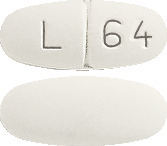1. Why am I using LEVI?
LEVI tablet contains the active ingredient Levetiracetam. LEVI is used to in epileptic patients aged 4 years and older, initially as add-on therapy, in the treatment of partial onset seizures with or without secondary generalisation.
Monotherapy in the treatment of partial onset seizures, with or without secondary generalisation, in patients from 16 years of age with newly diagnosed epilepsy.
For more information, see Section 1. Why am I using LEVI? in the full CMI.
2. What should I know before I use LEVI?
Do not use if you have ever had an allergic reaction to LEVI or any of the ingredients listed at the end of the CMI.
Talk to your doctor if you have any other medical conditions, take any other medicines, or are pregnant or plan to become pregnant or are breastfeeding.
For more information, see Section 2. What should I know before I use LEVI? in the full CMI.
3. What if I am taking other medicines?
Some medicines may interfere with LEVI and affect how it works.
A list of these medicines is in Section 3. What if I am taking other medicines? in the full CMI.
4. How do I use LEVI?
- The film coated tablets must be taken orally, swallowed with liquid and may be taken with or without food.
- The daily dose is administered in two equally divided doses.
More instructions can be found in Section 4. How do I use LEVI? in the full CMI.
5. What should I know while using LEVI?
| Things you should do |
|
| Things you should not do |
|
| Driving or using machines |
|
| Drinking alcohol |
|
| Looking after your medicine |
|
For more information, see Section 5. What should I know while using LEVI? in the full CMI.
6. Are there any side effects?
Most common side effects are: dizziness, feeling weak, headache, common cold, upset stomach, diarrhoea, feeling tired, drowsy or sleepy.
For more information, including what to do if you have any side effects, see Section 6. Are there any side effects? in the full CMI.

